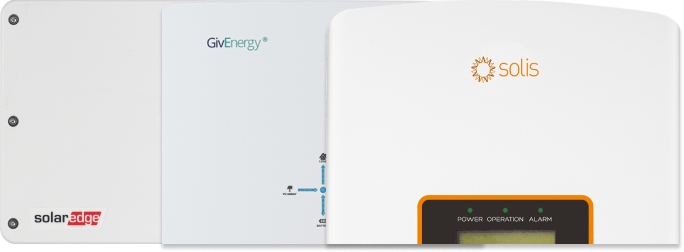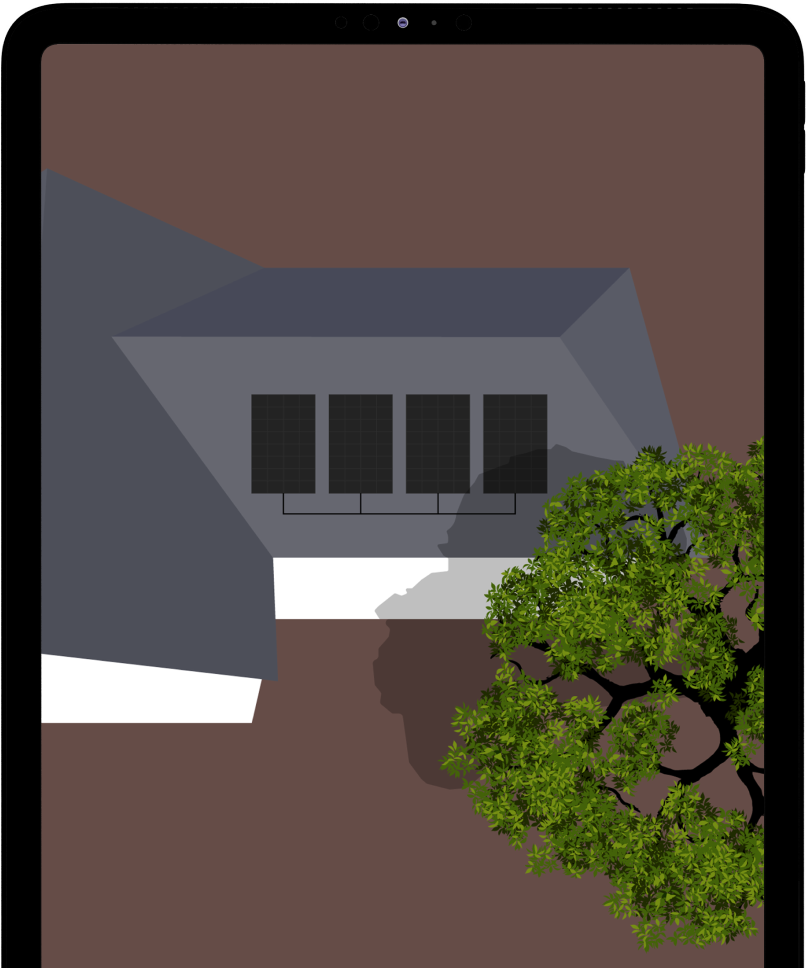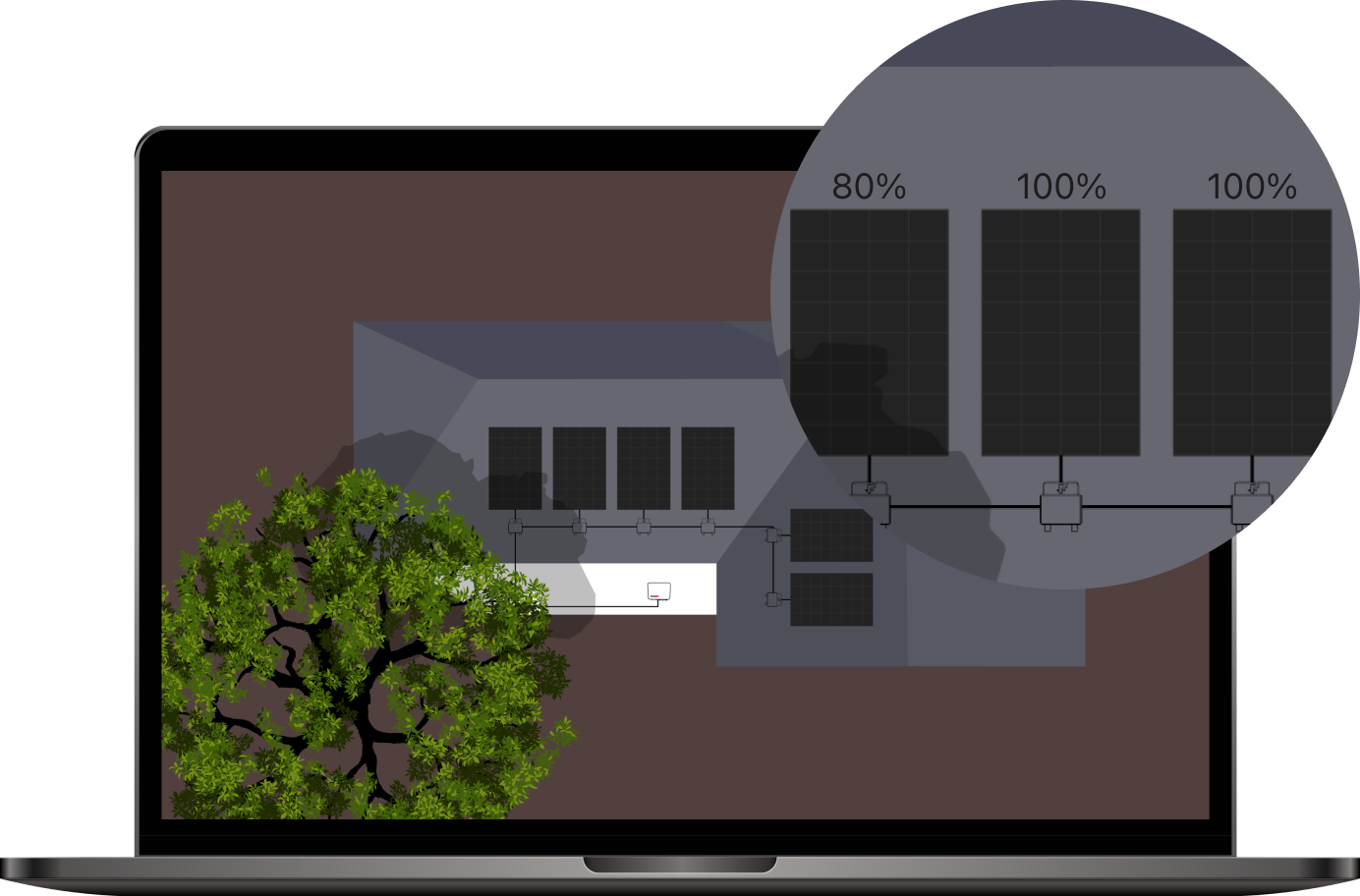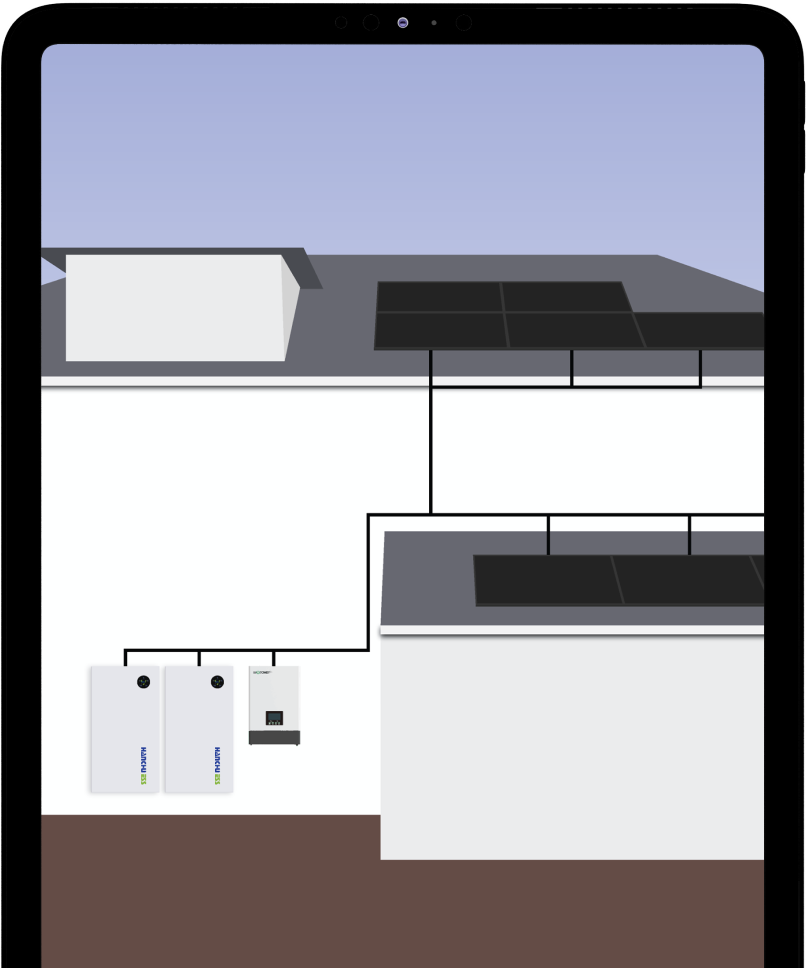
Convert your Solar Power
into useable power, seamlessly.
Impartial advice on the best tech, with transparent pricing.
String, Optimised or Hybrid.
What's best for your home?

The most conventional Solar PV configuration is the String method.
Panels are wired in series, with each module daisy chained to one another. Hence the name String. These systems can only produce at the level of the weakest link in the series.
Depending on the size of the PV array, systems may have one string powering the entire sequence, or multiple strings going into one inverter.
The power of
Looking for efficiency? The hunt stops here. Optimised PV systems output the most DC energy possible, no matter the conditions or potential shading implications.
Each panel works individually to maximise generation. One panel in shade? No problem. The rest of the system will work at 100% efficiency, unlike string systems.

SolarEdge
Inverter Conversion
Panel Level
Monitoring
99.5%
Efficiency
Up to 25%
more energy
DC coupled
battery compatible
25 Year
Warranty
Enphase
Local Conversion
Local DC to AC
conversion
AC cable
from roof
IP68 Rated
for rain or shine
AC coupled
battery compatible
25 Year
Warranty
PV & Battery. One Inverter... Hybrid
A modern way of having one Inverter control both your Solar PV and a Battery Storage system.
Opposed to having two separate devices control the Solar & Storage, one inverter manages the conversion of current for use in the home and the transition of energy into a battery system.
Download our Inverter Guide for more information on the different topologies.

Chipstead, Surrey
Redruth, Cornwall
High Wycombe
Epsom, Surrey
Dartford, England
Frequently Asked Questions
Choosing the type of inverter to have installed at your property is one of the most important decisions in your entire specification process. If you incur shading on the roof space(s) you wish to install Solar, or want to maximise production, it has to be an optimised system. A perfectly south-facing roof with no shading implications is ideal for a string or hybrid solution.
The main difference between AC (alternating current) and DC (direct current) is in the flow of energy and direction in which electrons flow. Direct current flows in one, steady direction, whereas alternating current varies in direction of travel. AC is used throughout all properties, domestic and commercial, in the UK. DC energy is produced by Solar PV modules and is then converted to AC for use in the home. Hence the need for an inverter.
We love and install both SolarEdge and Enphase Micro-inverter systems for our customers. The two solutions offer differing, unique features, but ultimately achieve the same solution. More Solar Energy generation. If you want a solution that converts DC to AC at the point of generation (on-roof), then Enphase Micro-inverters are for you. However, DC energy storage in a battery system is the most efficient way of storing energy at this moment in time. If storage and efficiency is key for you, then SolarEdge is your go-to.
The size of photovoltaic inverter required all depends on the size of your Solar array. The greater number of panels installed, the higher the rating of inverter needed. The size of inverter required is typically calculated by obtaining the kWp of the Solar array. Kilowatt-peak is the size of a solar photovoltaic system, worked out by multiplying the peak output of a PV module by the total number of modules. For example, 10x 430w panels would equate to a 4.3kWp PV system. In this instance, a 4kW inverter would be sufficient.
But what about the surplus 300w? Just like the system size, individual panels have a peak output. In our example, the peak output of said panel is 430w. However, this is the maximum amount of energy the module can produce, not guaranteed. With the UKs poor weather conditions and low light levels in winter, it’s very rare for a panel to produce its maximum energy levels.
On top of this, unless you have a due-south facing roof space at 0° degrees, optimal roof pitch and no shading issues, your system is unlikely to produce 4.3kWp day in, day out. Of course, some people are blessed to have said roof configuration, and so in that case, the inverter may be oversized to cover additional generation from the photovoltaic panels.